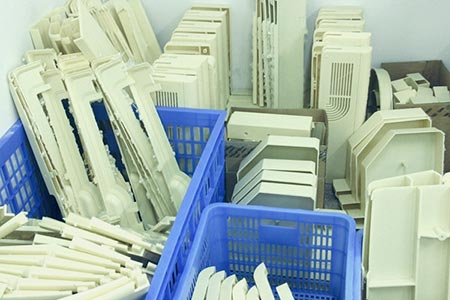What is vacuum casting used for?
Views: 812 Update date: May 20,2024
Vacuum casting is a manufacturing process primarily used for producing high-quality prototypes and small batches of functional parts. Here are some key applications and benefits of vacuum casting:Applications of Vacuum Casting
1. Prototyping:
Design Validation: Engineers and designers use vacuum casting to create prototypes that closely resemble the final product in terms of appearance and functionality. This helps in validating the design before mass production.Fit and Function Testing: Prototypes made through vacuum casting can be used to test the fit, form, and function of parts, ensuring they meet the required specifications.
2. Short-Run Production:
Low Volume Manufacturing: For products that require only a limited number of units, vacuum casting is a cost-effective method. It's often used for pilot runs or market testing before committing to full-scale production.Customization: The process allows for easy customization of parts, making it suitable for applications requiring tailored solutions.
3. Replicating Complex Geometries:
Detail and Precision: Vacuum casting can produce parts with intricate details and complex geometries that might be challenging or expensive to achieve with other methods like injection molding.4. Material Simulation:
Variety of Materials: This process can replicate parts using a wide range of materials, such as elastomers, resins, and other polymers, allowing for the simulation of different material properties in prototypes.5. Aesthetic Models:
High-Quality Finishes: Vacuum casting can produce parts with smooth surfaces and fine details, making it ideal for creating aesthetic models for marketing or presentation purposes.

Benefits of Vacuum Casting
1. Cost-Effective: Compared to traditional manufacturing methods, vacuum casting is more economical for producing small quantities of parts.
2. Quick Turnaround: The process is relatively fast, allowing for quick iterations and faster product development cycles.
3. High Precision and Detail: It offers excellent surface finish and high fidelity in replicating the master pattern, ensuring accurate and detailed parts.
4. Material Versatility: The ability to use different types of casting materials enables the production of parts with varying mechanical properties and appearances.
In summary, vacuum casting is widely used for producing prototypes, low-volume production parts, and components with complex geometries, offering a cost-effective and versatile solution for various industries including automotive, aerospace, consumer products, and medical devices.



